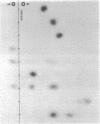Abstract
Three tripeptidyl polyoxins were synthesized and found to inhibit Candida albicans. Compared with the naturally occurring polyoxin D, the three synthetic polyoxins had little effect on chitin synthetase when assayed with a C. albicans membrane preparation. However, all the compounds inhibited growth, affected cell morphology in a manner similar to that of polyoxin D, and were hydrolyzed by cell extracts of C. albicans. Hydrolysis did not occur extracellularly, and at least one of the synthetic polyoxins, leucyl-norleucyl-uracil polyoxin C, inhibited peptide uptake, suggesting entrance into the cell via the peptide transport system. Thus, the intact tripeptidyl polyoxins are inactive prodrugs that are converted to active moieties by cellular enzymes.
Full text
PDF
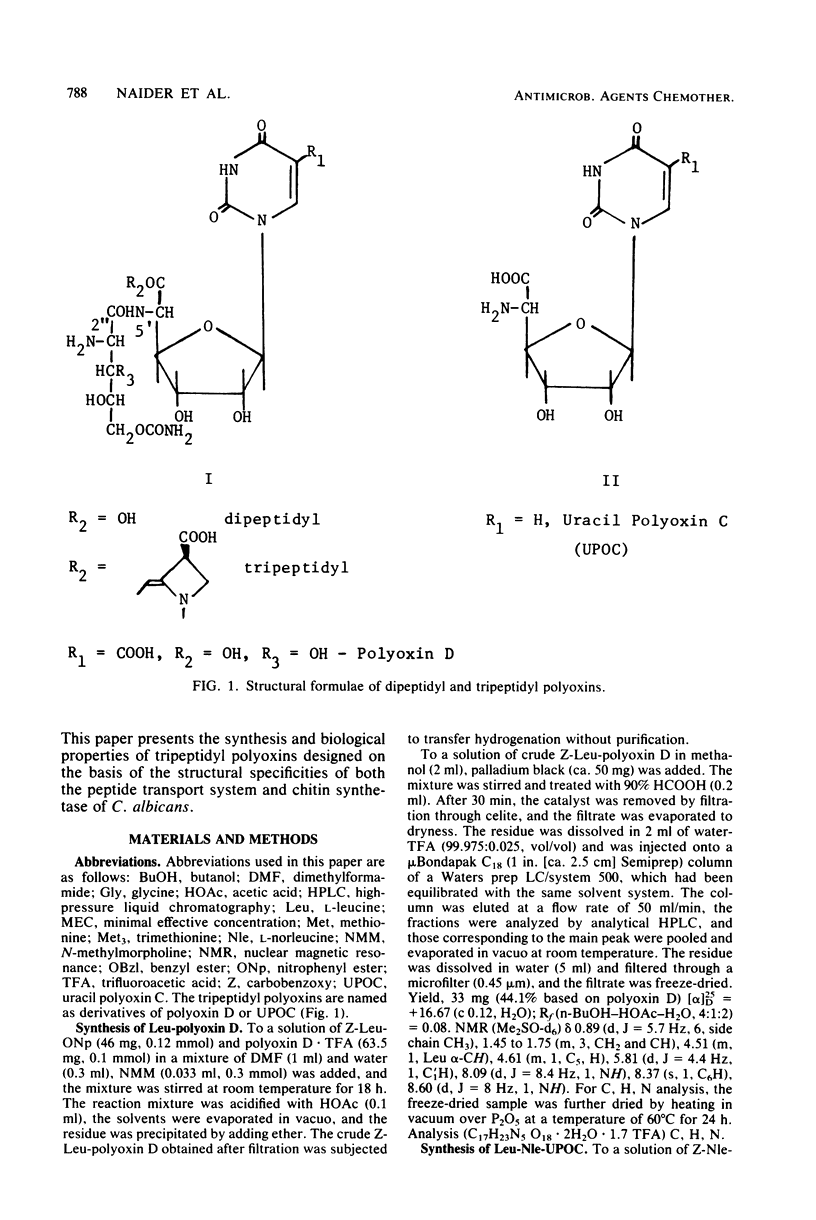
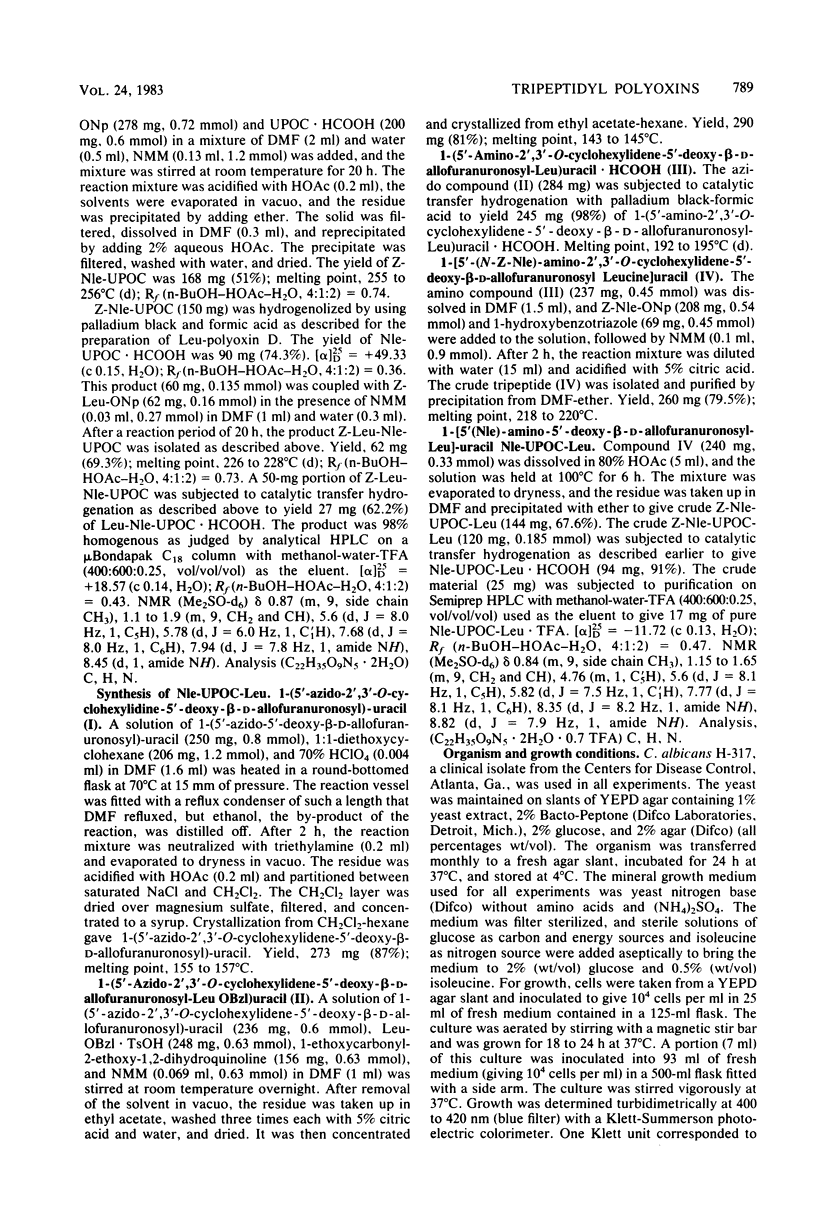
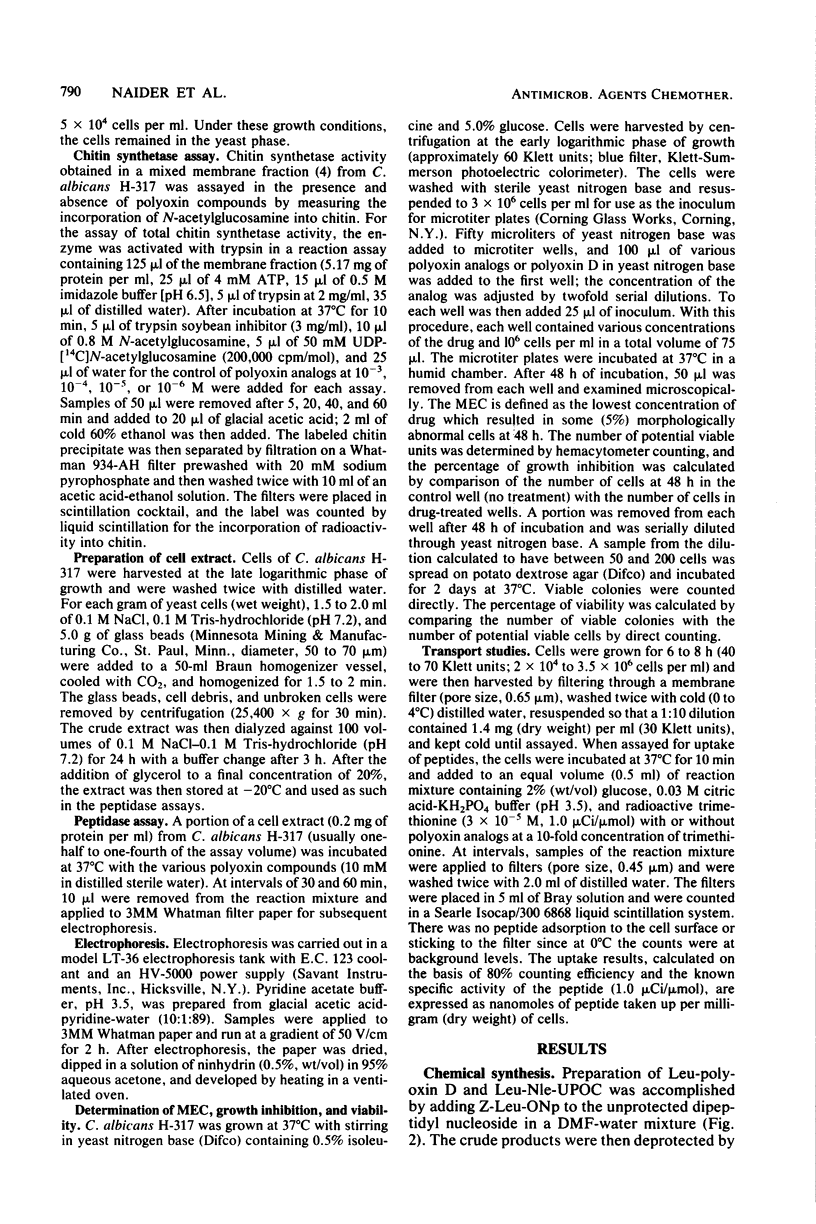
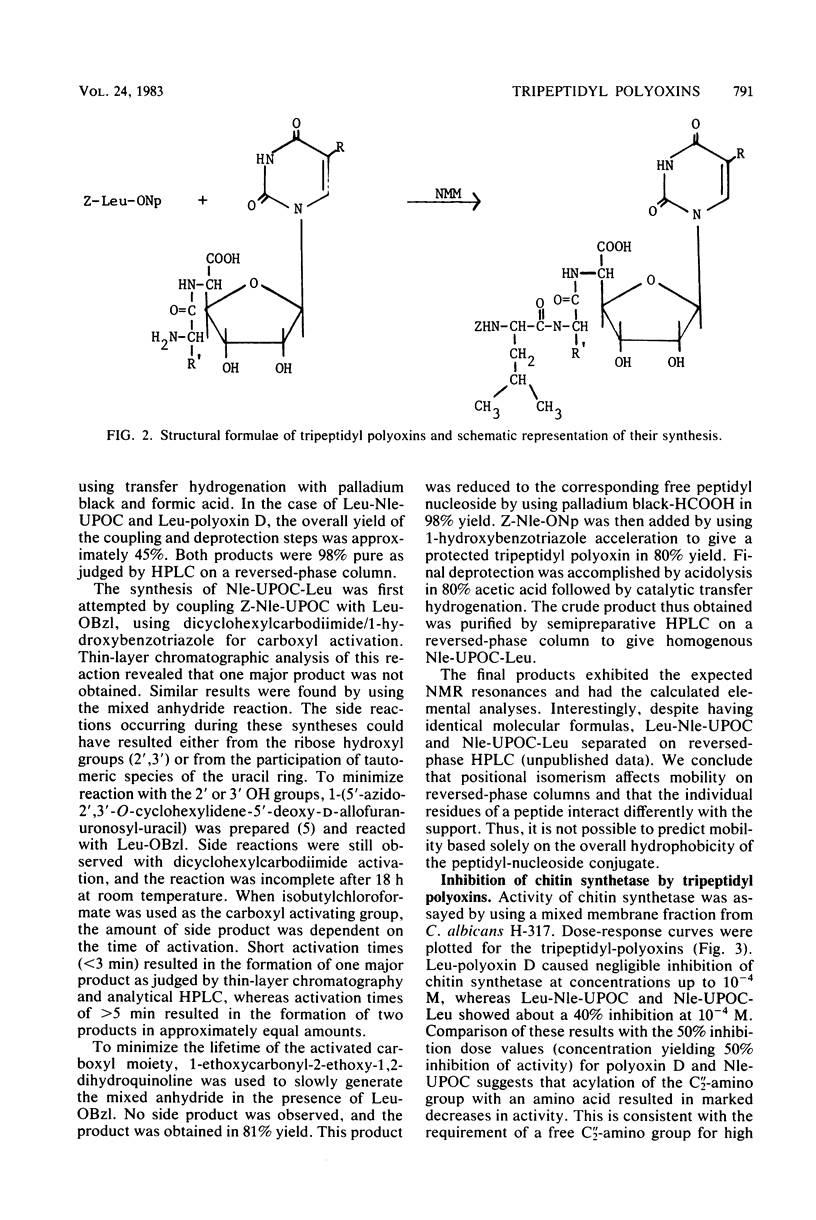
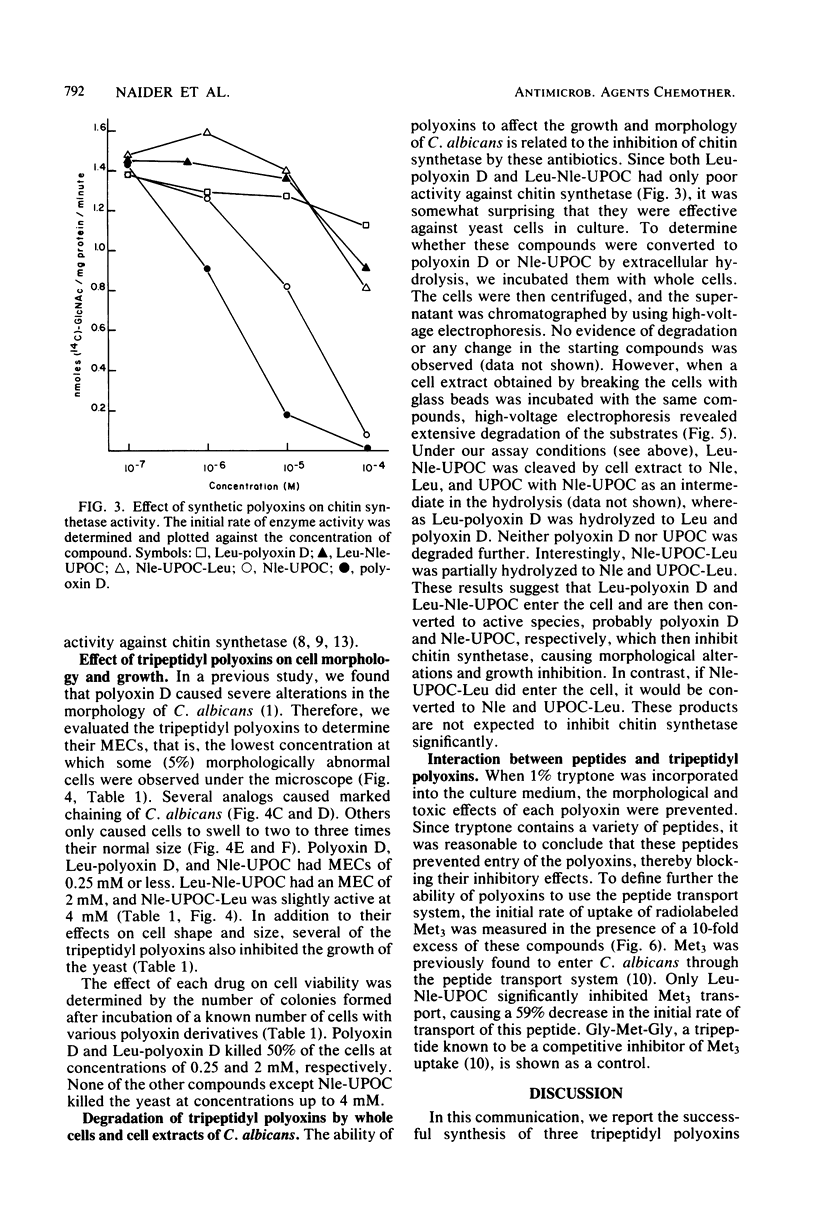
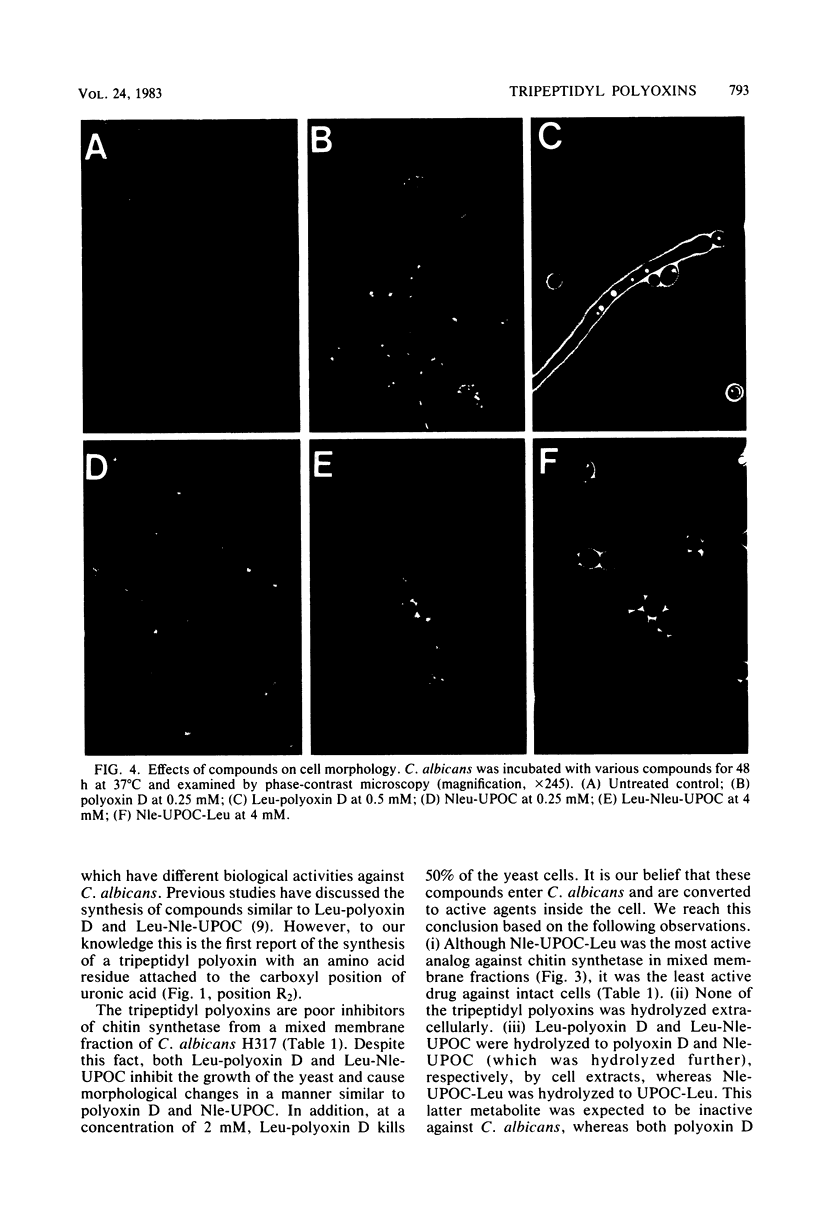

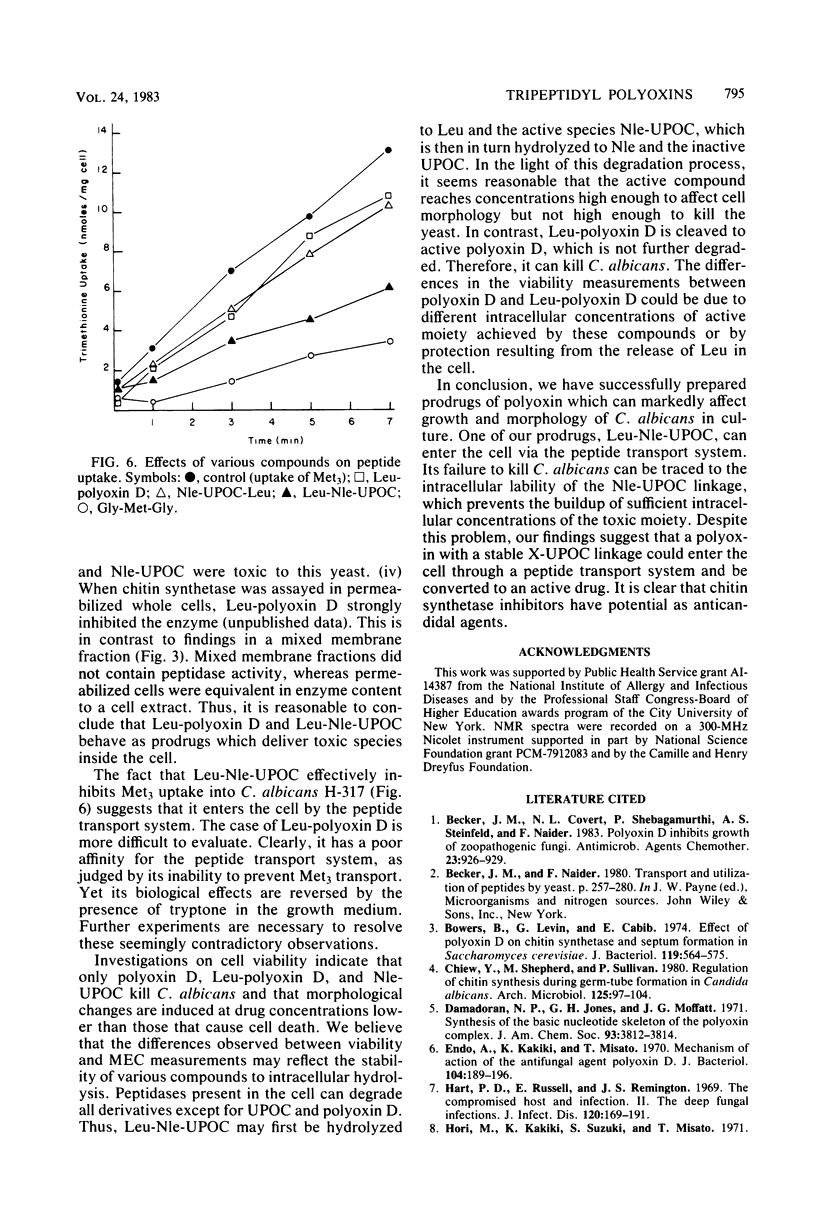
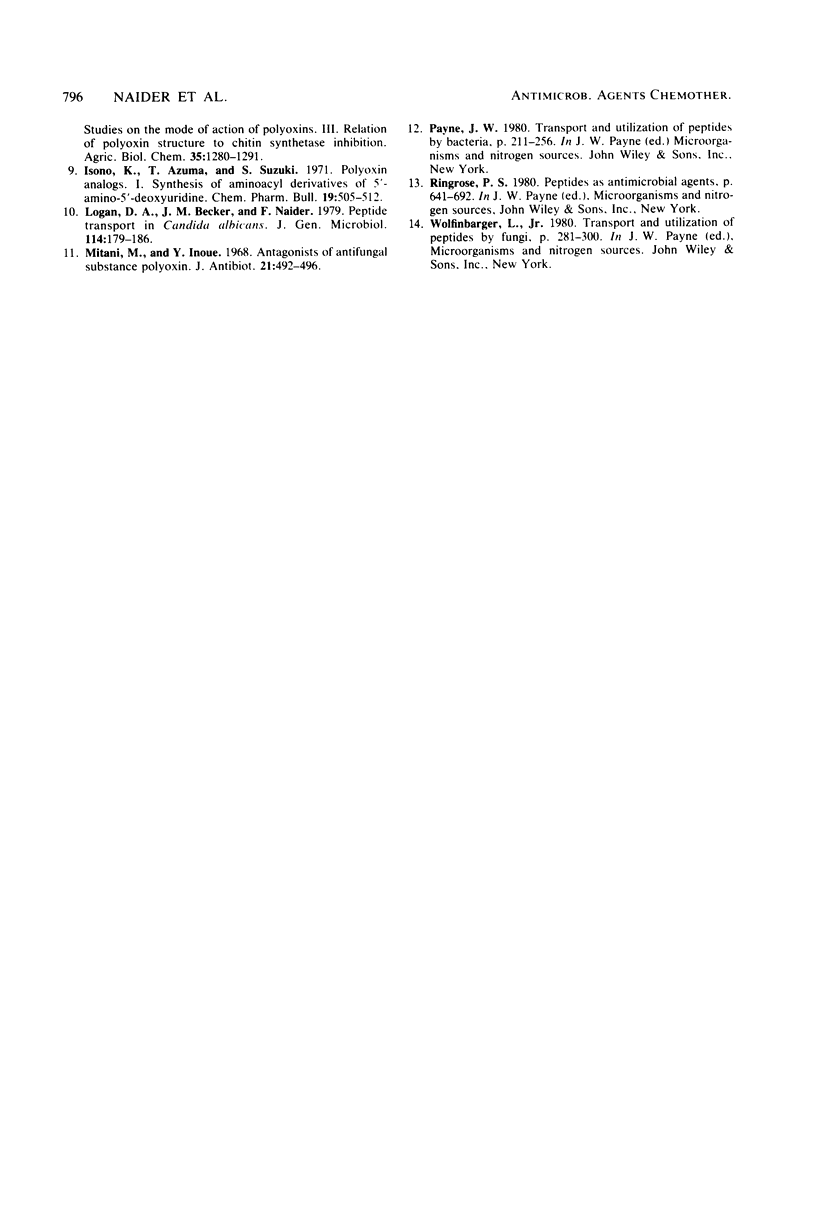
Images in this article
Selected References
These references are in PubMed. This may not be the complete list of references from this article.
- Becker J. M., Covert N. L., Shenbagamurthi P., Steinfeld A. S., Naider F. Polyoxin D inhibits growth of zoopathogenic fungi. Antimicrob Agents Chemother. 1983 Jun;23(6):926–929. doi: 10.1128/aac.23.6.926. [DOI] [PMC free article] [PubMed] [Google Scholar]
- Bowers B., Levin G., Cabib E. Effect of polyoxin D on chitin synthesis and septum formation in Saccharomyces cerevisiae. J Bacteriol. 1974 Aug;119(2):564–575. doi: 10.1128/jb.119.2.564-575.1974. [DOI] [PMC free article] [PubMed] [Google Scholar]
- Chiew Y. Y., Shepherd M. G., Sullivan P. A. Regulation of chitin synthesis during germ-tube formation in Candida albicans. Arch Microbiol. 1980 Mar;125(1-2):97–104. doi: 10.1007/BF00403204. [DOI] [PubMed] [Google Scholar]
- Endo A., Kakiki K., Misato T. Mechanism of action of the antifugal agent polyoxin D. J Bacteriol. 1970 Oct;104(1):189–196. doi: 10.1128/jb.104.1.189-196.1970. [DOI] [PMC free article] [PubMed] [Google Scholar]
- Hart P. D., Russell E., Jr, Remington J. S. The compromised host and infection. II. Deep fungal infection. J Infect Dis. 1969 Aug;120(2):169–191. doi: 10.1093/infdis/120.2.169. [DOI] [PubMed] [Google Scholar]
- Logan D. A., Becker J. M., Naider F. Peptide transport in Candida albicans. J Gen Microbiol. 1979 Sep;114(1):179–186. doi: 10.1099/00221287-114-1-179. [DOI] [PubMed] [Google Scholar]
- Mitani M., Inoue Y. Antagonists of an antifungal substance, polyoxin. J Antibiot (Tokyo) 1968 Aug;21(8):492–496. doi: 10.7164/antibiotics.21.492. [DOI] [PubMed] [Google Scholar]




